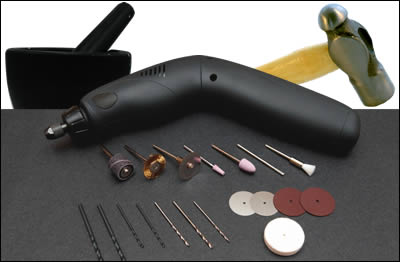Archival Notice
This is an archive page that is no longer being updated. It may contain outdated information and links may no longer function as originally intended.
Home | Glossary | Resources | Help | Contact Us | Course Map
Mitochondrial DNA (mtDNA) methods are useful in analyzing degraded samples and those containing very low quantity of nuclear DNA. mtDNA is present in cells at a much higher copy number than nuclear DNA (as noted in the table/animation above). The increased copy number of mitochondrial DNA per cell increases the concern for contamination introduced in the laboratory. The procedures used in mtDNA laboratories are designed to limit the possibility of contamination.
These procedures include:
- Wearing of special clothing (e.g., face masks, sleeves, hair nets)
- Use of dedicated laboratory equipment and other supplies
- Frequent cleaning and decontamination of laboratory and equipment
- Organization of work flow
- Monitoring of extraneous DNA through controls
Several forensic-and-ancient-remains research laboratories have published cleaning and extraction procedures for recovery of DNA from bones and teeth. The specific cleaning procedures are extremely important. If these specimens are not properly cleaned, external contaminants and potential inhibitors may be extracted with the DNA.20,21 As described in course DNA Extraction & Quantitation, inhibitors may be detrimental to the amplification process.
Published procedures include:22-27
- Rinsing the specimen with double distilled deionized water
- Rinsing with a dilute hypochlorite solution
- Polishing the specimen with a grinding stone followed by water and bleach rinses
- Exposing the specimen to ultraviolet irradiation
- Vertical sectioning of the tooth's crown for removal of the dental pulp
Specialized tools are needed for many of these extraction procedures, e.g., a Dremel tool, a MicroMill grinder, a freezer mill, an aluminum oxide wheel, a grinding stone, a mortar, a pestle, a chisel, a hammer, and/or a saw with diamond blade, just to name a few. The extraction of DNA from bones and teeth is a challenging process; many of the challenges can be overcome with the appropriate procedures and equipment.
Additional Online Courses
- What Every First Responding Officer Should Know About DNA Evidence
- Collecting DNA Evidence at Property Crime Scenes
- DNA – A Prosecutor’s Practice Notebook
- Crime Scene and DNA Basics
- Laboratory Safety Programs
- DNA Amplification
- Population Genetics and Statistics
- Non-STR DNA Markers: SNPs, Y-STRs, LCN and mtDNA
- Firearms Examiner Training
- Forensic DNA Education for Law Enforcement Decisionmakers
- What Every Investigator and Evidence Technician Should Know About DNA Evidence
- Principles of Forensic DNA for Officers of the Court
- Law 101: Legal Guide for the Forensic Expert
- Laboratory Orientation and Testing of Body Fluids and Tissues
- DNA Extraction and Quantitation
- STR Data Analysis and Interpretation
- Communication Skills, Report Writing, and Courtroom Testimony
- Español for Law Enforcement
- Amplified DNA Product Separation for Forensic Analysts


